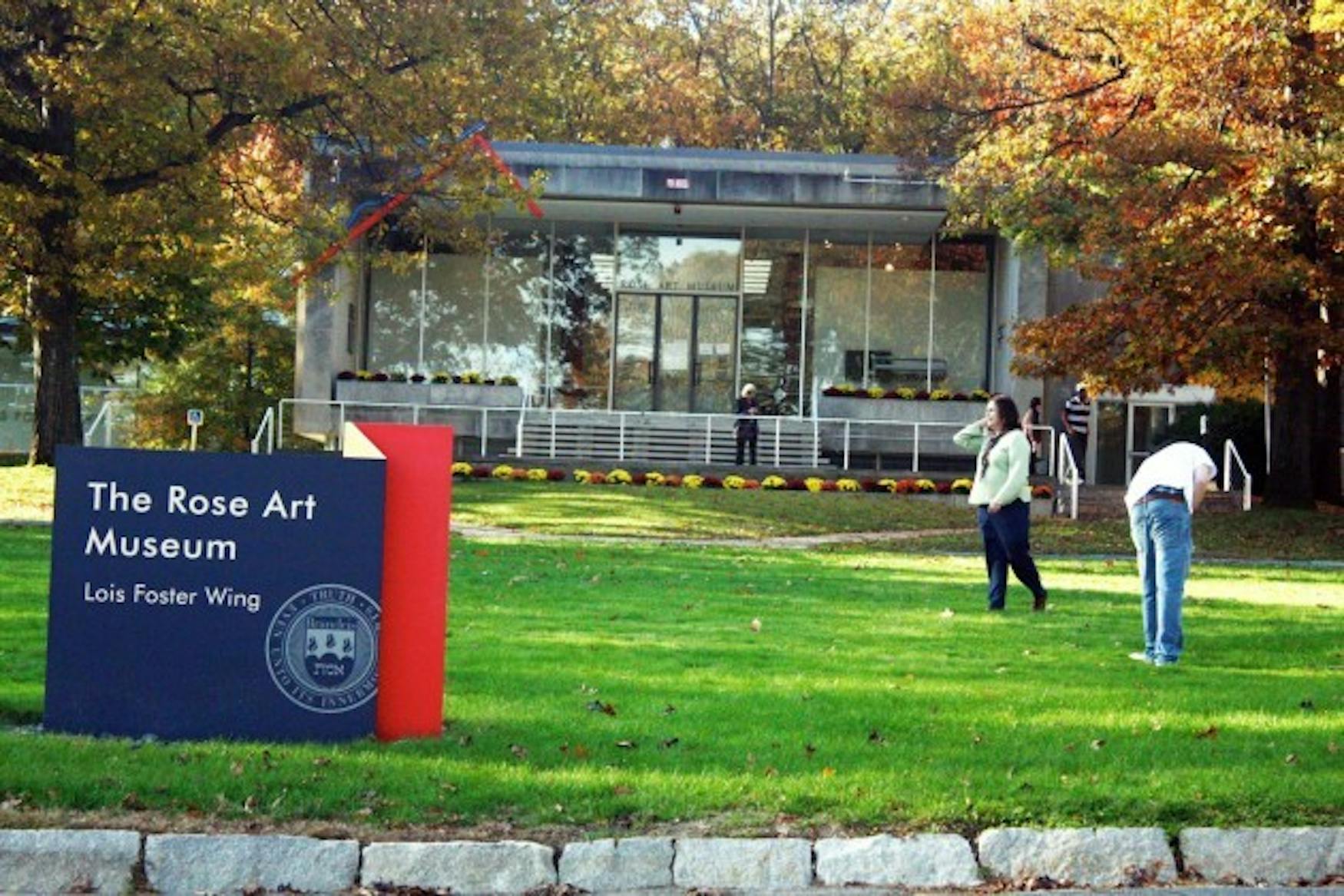Rose interns describe their experiences
JustArts spoke with this year's curatorial interns at the Rose Art Museum: the Sherman and Jill Starr Curatorial Intern, Dustin Aaron '14, and the Lynn Warner Curatorial Intern, Molly Channon '14.
JustArts: How did you get involved with the Rose internship?
Dustin Aaron: I was only marginally aware that there was an internship at the Rose. I knew that there were two positions because I was familiar with the two people that had them last year but I wasn't really aware of what they did. But I'm an Art History major so I was pretty conscious of the Rose and what was going on there. But at the end of last school year, there was a call for interns, essentially looking for people to interview. So I thought it was interesting and I obviously applied and got the position.
Molly Channon: Part of the reason I transferred to Brandeis last fall was because of the Rose and its amazing collection. I got involved with the museum through [Student Committee for the Rose Art Museum] and by working at the Rose as a gallery guard. Guarding at the Rose really piqued my interest in applying for the internship. It's definitely a unique opportunity I didn't want to miss.
JA: What does your typical day look like?
DA: There is no typical day, which is actually kind of part of the fun. It's always hectic, and if it's not hectic then it's incredibly quiet. There are a lot of different things going on depending on the time of year and the time of semester ... I don't spend a lot of time in the galleries. I'm mostly in the student office in the back and it's [doing] a lot of different tasks for different people. So if I'm working for the registrar I'm updating object files, updating the information we have on the artwork. If I'm working with the collections manager it will be moving things around in storage or condition reports. So no day's really the same.
But the day to day is generally tasks that need doing more than anything. Although one of the nice parts is as a student intern, we try to put together these student-based information packets and guides for the guards and museum visitors, for any of the students who would for some reason be doing research on the collection and for what's up on display so a lot of what we do is research on the artists and the art that's up.
JA: Have you had any unique or especially interesting experiences that you had due to your position as a curatorial intern?
MC: Spending time in the vaults has been amazing, as well as being able to witness and participate in the incredibly elaborate and meticulous work that goes on behind the scenes in preparing exhibitions.
The end result speaks for itself, but the process leading up to a show is truly fascinating.
JA: What has been your biggest challenge as a curatorial assistant?
DA: Definitely my biggest challenge has been learning to appreciate some of the artwork. I come from a more medieval base. I study medieval art and I'm a Medieval and Renaissance Studies minor and that's my focus. So this whole internship is a little out of my field, which has been great. It's great exposure and I think one of the hardest parts has been coming to appreciate some of the contemporary artwork-especially some of the stuff that's being put up on display now.
MC: As in any internship, it can be hard to find your place as an intern. One thing that I've learned through my experience is that it is valuable to speak up, ask questions, volunteer and always maintain your motivation when on the job.
JA: Do you like working in a museum atmosphere and is this something you would like to pursue as a career?
DA: I'm hopefully going to grad school in the fall. Hopefully I'll end up in museums one day ... doing some sort of curatorial work so this is a great stepping-stone on the way there.
MC: I definitely plan to pursue a museum career. It requires just the right amount of teamwork, individual drive and investigative research that I love so much. I can't imagine pursuing any other career.



Please note All comments are eligible for publication in The Justice.